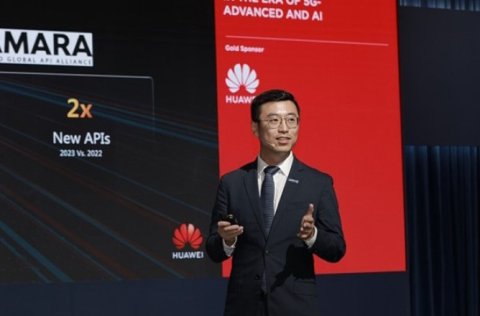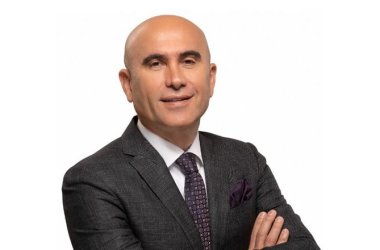Huawei, a global leader in telecommunications technology, is presenting its cutting-edge 5G-Advanced (5G-A) and AI solutions at Mobile World Congress (MWC) Shanghai 2024 under the theme “Advancing the Intelligent World.” The company is showcasing its latest products and solutions that support commercial 5G-A deployment and the AI devices required for the mobile AI era.
The year 2024 marks the start of a new era of mobile AI empowered by the commercial launch of 5G-A and rapid advances in AI. Leading operators in the Middle East and China have started to deploy 5G-A networks, with some of them already launching differentiated experience-based 5G-A packages.
the start of a new era of mobile AI empowered by the commercial launch of 5G-A and rapid advances in AI. Leading operators in the Middle East and China have started to deploy 5G-A networks, with some of them already launching differentiated experience-based 5G-A packages.
Huawei’s Executive Director of the Board and Chairman of the ICT Infrastructure Managing Board, David Wang, delivered a keynote speech titled “Accelerating 5G-A and Shaping the Mobile AI Era”. He emphasized that the mobile AI era will transform human-machine interaction, content production, and mobile devices, revitalizing society and creating opportunities for the mobile industry.
Wang noted, “This month marks the fifth year since 5G’s commercial launch in China. Over the past five years, commercial 5G has achieved remarkable success and made an unprecedented impact on the global mobile industry.” He added that Huawei looks forward to working with all industry stakeholders to seize the enormous opportunities presented by the mobile AI era to shape the intelligent world.
Dr. Philip Song, Chief Marketing Officer of Huawei Carrier Business Group, explained how Open Gateway will be essential for carriers to pursue experience-driven operations based on diverse 5G-A network capabilities. Open Gateway defines unified standards, billing modes, and a global ecosystem within an interoperable framework. It will become a new engine for 5G-A experience-oriented operations and spur the creation of new business models.
Song shared examples of open API applications developed with carrier partners. One such application is the service appointment API for toC and toB mobile live-streaming, which provides a guaranteed experience for live-streamers according to their individual requirements. Another feature favored by insurance companies is the New Calling API, which integrates HD video, interactive data, content sharing, and AR marking into loss assessment, shortening the process from 2 hours to just 10 minutes.
Yang Chaobin, Huawei’s Board Member and President of ICT Products & Solutions, discussed how AI technology, particularly generative AI, brings new opportunities and requirements to telecom networks. He introduced Huawei’s upgraded Autonomous Driving Network (ADN) solution, now powered by the company’s Telecom Foundation Model. This solution provides five role-based copilots and five scenario-based agents to enhance network value in service enablement, maintenance, and experience assurance.
The copilots support five roles: network operations center (NOC) staff, customer service personnel, field maintenance engineers, home broadband installation and maintenance engineers, and home broadband users. They are reshaping human-machine interaction and collaboration by supporting intelligent knowledge Q&A and assisted O&M, significantly improving efficiency and lowering the bar for technical engineers.
The agents support five high-value scenarios across network maintenance, optimization, and operation. Based on preset policies, they can automatically break down complex tasks, orchestrate processes, and invoke tools and APIs to achieve scenario-based autonomy, greatly improving both operational efficiency and customer experience.
Huawei has announced reaching six separate consensuses with pioneering 5G-A operators worldwide and launched a joint initiative for high-quality mobile video development in the AI era. The company will continue to invest in the R&D of network APIs, exploring new services, accelerating the development of incumbent services like fixed wireless access (FWA), and improving O&M efficiency.
Leading operators around the world are already looking to capitalize on 5G-A. More than 30 operators have completed 5G-A technical verification, and nearly 20 mobile phone models currently support multi-carrier aggregation, with some supporting the feature by default. Around ten operators have announced commercial 5G-A plans, including the launch of 5G-A packages and related services.
Multiple operators in the Middle East and China have started to deploy 5G-A three-carrier component (3CC) aggregation networks at scale, targeting 5 Gbit/s downlink rates. Many operators are introducing a new experience-based monetization model as they transition to 5G-A.
The number of global 5G users has exceeded 1.8 billion, and many operators have already seen the first wave of benefits from 5G. Consumer services like New Calling, cloud phones, and glasses-free 3D have higher network requirements, such as increased speed and lower latency. In terms of industrial services, the RedCap ecosystem has matured, passive IoT is now available to a broader market, and Internet of Vehicles (IoV) applications require higher uplink speeds.
This year marks the beginning of commercial 5.5G and F5.5G gigabit optical network deployment. Synergies across networks, cloud, and intelligence are set to give rise to pervasive intelligent applications and increasingly diverse user experiences. Huawei, along with global operators, industry professionals, and opinion leaders, will explore topics such as amplifying 5G’s success in the 5.5G era and tapping into the potential of operator revenue growth to accelerate progress towards an intelligent world.
MWC Shanghai 2024 is being held from June 26 to June 28 in Shanghai, China. During the event, Huawei will showcase its latest products and solutions at stands E10 and E50 in Hall N1 of the Shanghai New International Expo Centre (SNIEC).





